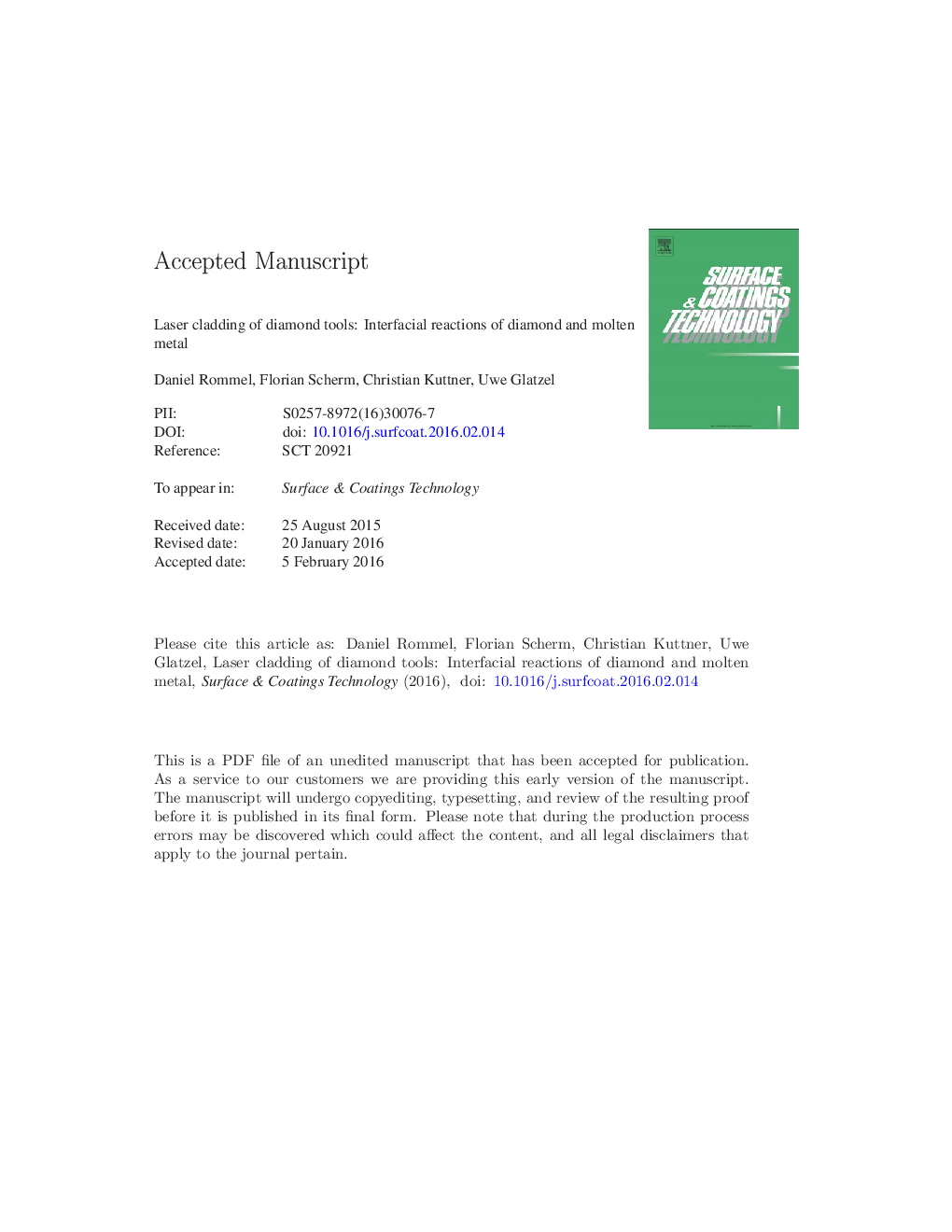| Article ID | Journal | Published Year | Pages | File Type |
|---|---|---|---|---|
| 8025485 | Surface and Coatings Technology | 2016 | 37 Pages |
Abstract
We present the laser cladding as an alternative way for the production of metal bonded diamond tools. Diamond beads for wire saws, which are usually manufactured by means of electroplating, can be fabricated by laser cladding in a single step process. A hardfacing NiCrSiFeB-alloy is used as matrix material to bind the diamonds to the steel substrate. Laser cladding is performed at constant temperature, using an online temperature measurement in combination with laser power control. Experiments were conducted using a high power diode laser as laser source. Key issues are the interfacial reactions of the diamond with the liquid matrix material. To hold the diamonds firmly in contact with the metal matrix, adequate wetting and sufficient embedding is a prerequisite. At the same time the diamonds are affected by the liquid metal and interaction with the laser radiation. The damage was investigated by determination of the toughness index (TI) before and after the laser cladding process. Bonding of the diamonds was analyzed by scanning electron microscopy (SEM) in combination with focused ion beam (FIB) preparation of diamond metal interface. Chemical composition was measured by means of energy dispersive X-ray spectroscopy (EDS). Raman microscopy was applied to verify the formation of an interphase layer of graphite at the interface of diamond and matrix material. The weak bonding strength of graphite interlayers significantly reduces the diamond-matrix adhesion, which is a key issue for industrial applications.
Related Topics
Physical Sciences and Engineering
Materials Science
Nanotechnology
Authors
Daniel Rommel, Florian Scherm, Christian Kuttner, Uwe Glatzel,
